A pimple on the face is always an unpleasant occurrence, regardless of location. In addition to aesthetic discomfort, rashes indicate the presence of problems inside the body. Acne is most common on the cheeks of women. Their causes vary, and only a doctor can accurately determine them after a full examination.
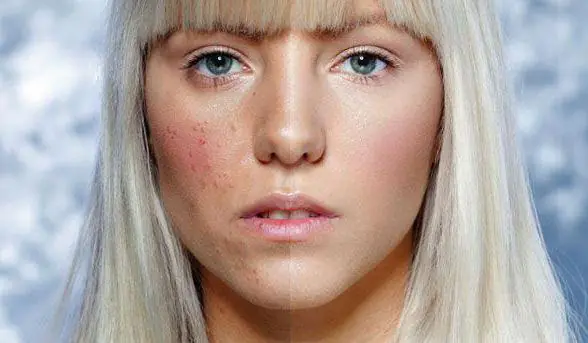
Causes of rashes
Pimples in the cheekbones and cheeks appear when:
- intestinal dysbiosis;
- menstrual irregularities and hormonal imbalances;
- allergic reactions, especially those caused by food;
- disorders of the endocrine system, in particular the thyroid gland;
- lack of microelements and vitamins (especially groups E, B and zinc).
In addition to pathological reasons, pimples can appear in adolescence due to hormonal changes in the body; as a rule, after the body matures, pimples on the cheeks in women disappear. The reasons for their appearance are the excessive activity of the sebaceous glands due to hormonal changes. With diligent skin care and the use of certain cosmetics, problems may also arise, manifested by the appearance of rashes on the cheeks.
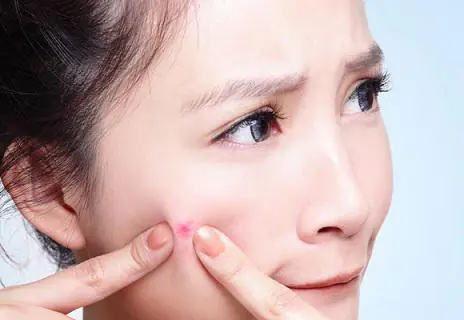
Before the onset of menstruation, due to a hormonal surge, isolated rashes appear on the face, which go away on their own with the onset of menstruation.
Food causes of rashes
Acne on the cheeks in women, the causes of which are poor diet, is much easier to eliminate than in the presence of hormonal disorders. Eating large amounts of processed foods, fatty and fried foods, spicy or salty foods causes problems in the digestive system, which are reflected on the face in the form of rashes.
When the body is heavily polluted, pimples cannot be eliminated with cosmetic procedures and daily care products. Toxins enter the bloodstream from the intestines, spread throughout the bloodstream and appear on the skin in the form of pimples.
They can be localized not only on the face, but also on the body. Most often, rashes appear on the back, shoulders and décolleté. To avoid acne, you need to follow the secrets of health - adhere to proper nutrition and lead an active lifestyle.

Diagnosis of the causes of rashes on the cheeks
To identify the true cause of the appearance of pimples on the face, you need to:
- take a blood test - general, biochemical, detailed and be sure to check your blood for sugar;
- do an abdominal ultrasound and gastroscopy to identify gastrointestinal diseases;
- conduct allergy tests to determine the product or substance that causes allergies in a person;
- take a stool test to detect helminthic eggs, dysbacteriosis and Giardia;
- examine the endocrine system and do an ultrasound examination of the thyroid gland;
- women need to be examined by a gynecologist to rule out hormonal imbalances and diseases of the reproductive system.
If all the results are available, the doctor will be able to tell you how to eliminate acne on the cheeks in women; the causes of the rash can also be determined, and then treatment can be prescribed.
Diet and lifestyle
The first thing you need to do is adjust your diet and daily routine. The body must receive the necessary vitamins and microelements that normalize the functioning of all its systems. It is important to get enough rest, spend a lot of time outdoors, lead an active lifestyle and drink enough clean water.
Any bad habits will contribute to the appearance of rashes on the cheeks, so you need to minimize or completely give up alcohol, smoking, fatty and fried foods, salty and spicy foods, sweets and soda.
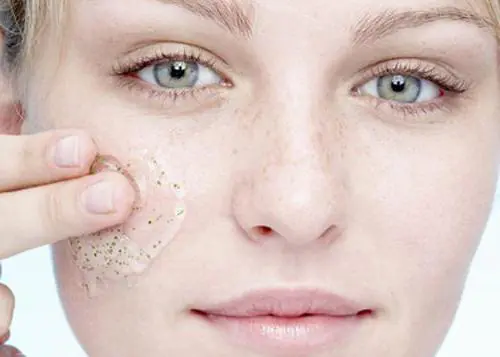
Single pimples are no cause for concern. They only signal that it has become difficult for the body to cope with its work due to overload. If acne covers most of the skin on the body, does not mature and remains subcutaneous, then you need to be examined by a doctor to determine why the pimple appeared on your cheek.
What to do in this case? Pimples cannot be squeezed out on your own; this procedure can lead to the spread of infection to healthy areas of the skin, severe damage to the epidermis and the development of pathological cells.
Acne on the cheeks in women: treatment with medications
Depending on the cause of the rash, the doctor prescribes appropriate medications, the use of gels or ointments. At the initial stage of diseases, doctors prescribe medications that regulate the functioning of the gastrointestinal tract, as well as drugs to strengthen the body’s immune system.
If inflammation on the face is severe, antibacterial therapy is prescribed; it eliminates streptococci, staphylococci and E. coli, which cause intoxication of the body.
For hormonal disorders, it is necessary to take androgenic drugs. It is especially important to carry out hormonal treatment if women have thyroid diseases. At the end of the course of treatment, you need to continue to take supportive measures for the normal functioning of the intestines and immune system.
How to reduce the number of rashes at home
To improve the condition of your skin, you need to take care of it daily and regularly. The most useful procedures are:
- peelings;
- scrubs;
- masks;
- application of antibacterial agents.
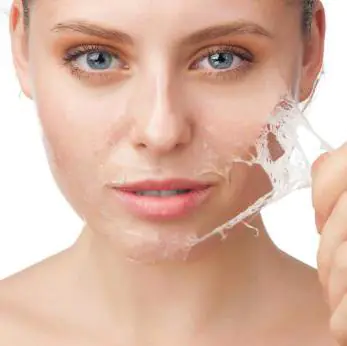
The skin of the cheeks is very delicate and needs special care. Eliminating rashes in this area takes a long time, so you need to prepare a clear care plan and follow it daily, without skipping procedures. In this case, the question will not arise why pimples appeared on the cheeks and how to eliminate them.
Hardware cosmetology for rashes
Hardware cosmetology can help cope with acne on the cheeks. The following procedures will be useful:
- microcurrent treatment;
- laser skin resurfacing;
- ozone therapy;
- mesotherapy;
- dermabrasion.
Regular facial skin care will prevent the appearance of rashes and reduce excessive activity of the sebaceous glands.
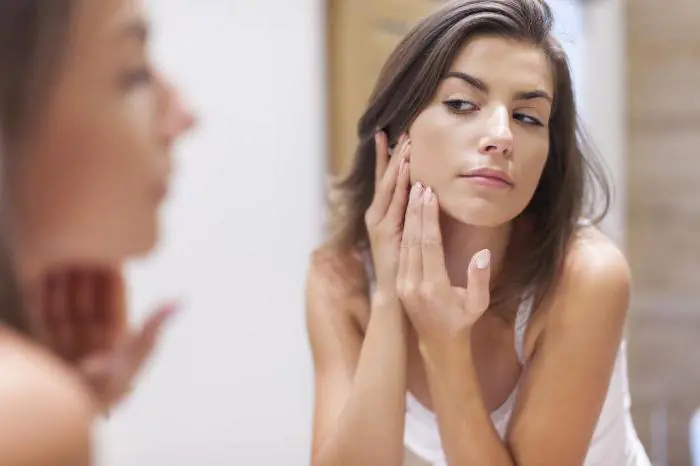
Folk remedies for acne
You can eliminate red pimples on your cheeks with homemade face masks. They can be prepared from any product or purchased ready-made.
A potato mask can improve the condition of even the most irritated skin. It is necessary to peel and grate the potatoes on a fine grater, place on gauze and apply the mask to the face for 15-20 minutes. After this, you need to wash your face with cool water and treat your skin with a moisturizing toner.
Clay masks can be made 2 times a week. The clay is diluted with filtered cool water, lemon juice or essential oils of tea tree, lavender, mint, lemon balm, lemon, fir are added. The clay is applied to the skin in a thin layer; after the mask dries, it must be washed off with warm water and be sure to moisturize the skin of the face and neck.
A mixture of honey and lemon allows you to see the result after just a few uses. But this option is suitable only if you are not allergic to honey.
Preventing facial rashes
Getting rid of rashes is not enough, the main thing is to prevent their reappearance. The main secrets of health will help with this.
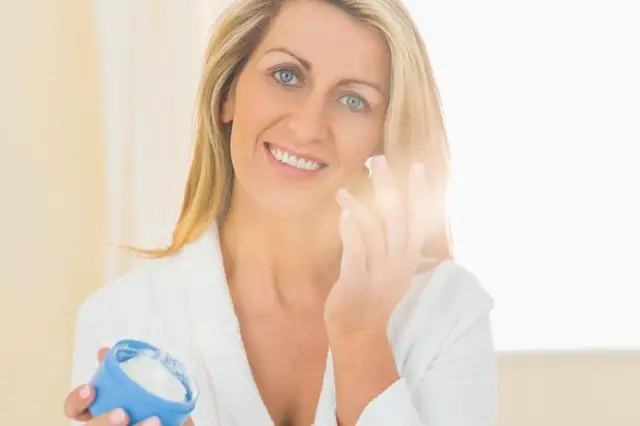
- Every morning and evening you need to carry out hygiene procedures. Cleansers (foam, gel, scrub), toner, milk, and creams should be selected according to your skin type. It is especially important to cleanse your skin of cosmetics in a timely manner.
- You need to adhere to proper nutrition. Eat plenty of fresh fruits and vegetables, dairy products. For healthy skin, you should give up fast food, fatty and fried foods, sweets and carbonated drinks.
- Stressful situations also affect the condition of the skin. Therefore, you need to take care of your nervous system and avoid strong experiences.
- Do not touch your face with dirty hands or squeeze out pimples yourself.
- The cosmetics used must be of high quality and not cause allergic reactions.
- It is necessary to undergo timely examinations to diagnose thyroid diseases in women.
Prevention plays an important role; thanks to early care of the condition of your skin, you will be able to avoid many problems, such as acne, rashes and suppuration. You need to start taking care of your skin as early as adolescence, then excessive activity of the sebaceous glands will not cause major skin problems.
Acne (acne) in adolescents is considered normal and after the formation of hormonal levels, they disappear. However, in some patients, and more often in women, acne may appear at a later age. Doctors see the main reasons for this in high levels of male hormones or their excessive activity, as well as in a certain type of work of the sebaceous glands. And if in adolescents acne vulgaris appears mainly in the area of the nose, chin and forehead, then at a later age acne is localized on the cheeks. The rash may disappear on its own or be permanent.
Types of rashes
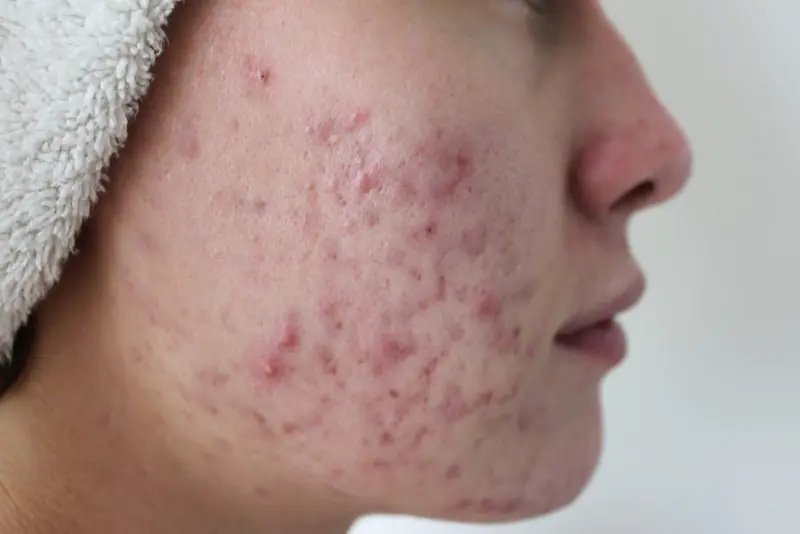
Pimples on the cheeks can represent various elements:
- comedones;
- papules (cavitated tubercle);
- pustules (abscess);
- cysts;
- nodes.
These can be single elements or multiple rashes merging with each other. Most often, acne appears on the cheeks and chin in the form of comedones and papulopustular rash. Less common is the severe form of cystic nodular acne.
Hormones as one of the causes of acne on the cheeks
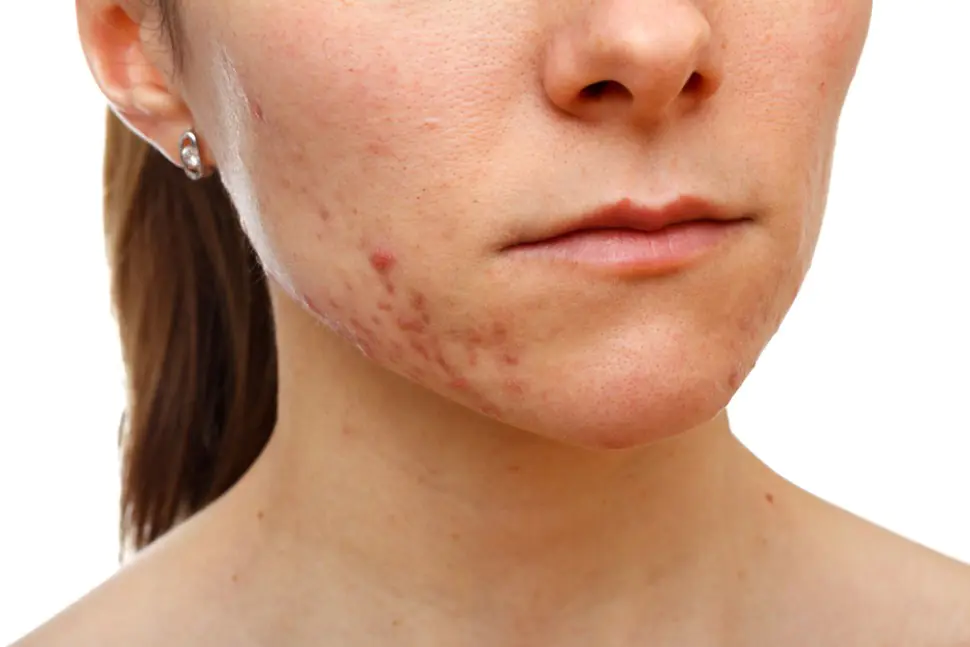
The skin is a target organ for many hormones. Therefore, when acne appears on the cheeks of women, their cause is primarily associated with a pathological hormonal state caused by a number of diseases.
Acne appears when 4 factors are triggered:
- sebaceous glands secrete excessive amounts of sebum;
- the cells lining the ducts of the hair follicle begin to actively grow and die;
- bacteria penetrate;
- inflammation begins.
Estrogens are hormones that suppress sebum secretion. Androgens, especially testosterone and dehydrotestosterone, have a strong effect and stimulate the function of the sebaceous glands.
The female reproductive and endocrine glands are the main sources of androgens (male hormones) in a girl’s body. A small proportion is also formed in adipose tissue and liver. Hormones increase the activity of the sebaceous glands, accelerate the exfoliation of epithelial cells and thereby contribute to the formation of non-inflammatory elements. When bacteria enters this area, an inflammatory process begins.
There are many reasons why androgen levels increase:
- in girls at the end of puberty (considered a physiological norm);
- polycystic ovary syndrome;
- congenital disorder of the adrenal cortex;
- tumor changes in the ovaries and adrenal glands;
- diabetes;
- pathologies of the thyroid gland;
- increase in body weight due to adipose tissue.
When pimples appear on the cheeks of girls, the reasons are associated with an increase in the amount of male hormones, then they are accompanied by other symptoms:
- menstrual irregularities;
- hair loss on the head;
- weight gain;
- Excessive male pattern facial hair growth.
In addition to diseases that cause an increase in androgen levels, when acne appears on the cheeks, the causes may be associated with even minor changes in the endocrine balance. Thus, acne on the cheeks may appear before menstruation, be a consequence of taking contraceptives or stopping their use and the use of anabolic steroids.
In half of the cases, the causes are associated with a hereditary predisposition to acne. It is noted that if the older generation in the family had this dermatological disease, in 70-80% of cases it will be inherited.
Cosmetical tools
The use of comedogenic cosmetics is another reason why acne on the cheeks can get worse and not go away for a long time. Long-term use of fatty creams, which contain, for example, isopropyl myristate, is a common cause of cosmetic acne in the form of comedones. When purchasing skincare products, you should opt for products labeled “non-comedogenic” or “non-acnegenic”
Moderate sun exposure has a disinfecting effect on the skin and dries out purulent rashes. However, excessive abuse of ultraviolet radiation (on the beach, in the solarium) has the opposite effect. The top layer of skin dries out, which acts as a signal to the sebaceous glands, and they begin to intensively produce secretions. Therefore, prolonged sun exposure provokes an exacerbation of existing acne and the appearance of new ones.
Stressful situations
It has been noted that women exposed to stress are more likely to suffer from acne. Stress is a trigger. Through nerve endings, it influences the production of neuropeptides, which in turn stimulate the sebaceous glands to produce more sebum. People suffering from acne have a greater number of nerve endings and more nerve fibers.
Nutrition and habits
Foods high in carbohydrates can increase the concentration of insulin in the blood. Insulin, in turn, increases androgen levels. The result of this connection is an increase in sebum production and acne.
If you already have rashes, excessive consumption of seafood, as well as foods high in iodine and bromine, can aggravate the situation.
Diet for acne is considered one of the links in complex therapy. You should include foods rich in fiber, Omega-3 acid, and vitamins A, C, and E into your diet.
One of the factors contributing to the appearance of acne is the habit of smoking. Nicotine reduces vitamin E concentrations and increases sebum production.
Acne as a sign of internal diseases
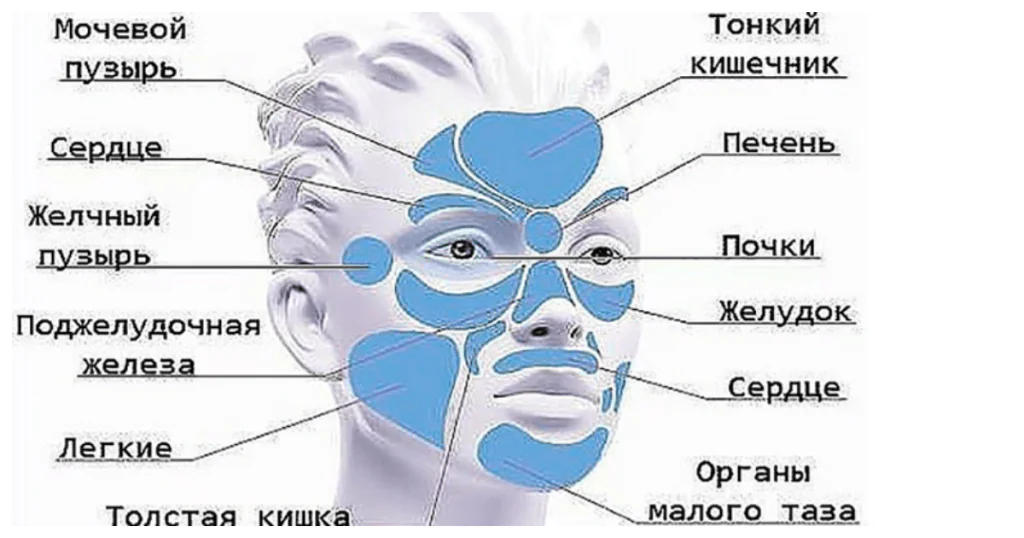
Eastern medicine still uses a technique according to which if there are problems with some internal organ, this is reflected in the condition of the skin in a certain area. So if acne appears on the right cheek, then the person has problems with the right lung, if acne appears on the left cheek, then it means the person has problems with the left. If the area of rashes is limited to the upper part of the cheeks, on the cheekbones, you should check the stomach. Of course, this technique is not a basis for making a diagnosis, but it can serve as a reason for conducting an examination of internal organs.
Principles of treatment
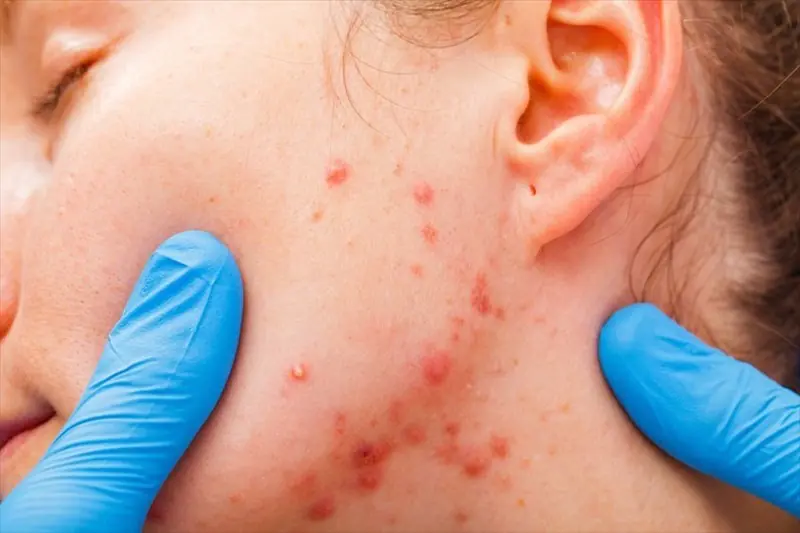
Before getting rid of acne on the cheeks, you should find out the causes of its appearance. To do this, you may need to undergo a hormonal profile study, take an insulin test, a dexamethasone test (for adrenal hormones), and a glucose tolerance test (for diabetes). Take a blood test to examine your liver and kidneys. In some cases, scraping is necessary to rule out demodicosis and folliculitis. Undergo a gynecological examination.
Hormone therapy
Acne associated with hormonal disorders should be treated under the supervision of a gynecologist and dermatovenerologist. Treatment begins with restoring hormonal levels and eliminating the causes that provoked its failure. At the same time, the dermatologist evaluates skin problems and prescribes local remedies.
If the area affected by acne is extensive, Spironolactone can be taken. It is a diuretic that can suppress androgens and thus help reduce the secretion of the sebaceous glands. The same drug is prescribed as a therapeutic agent for premenstrual syndrome.
The drug of choice is combined oral contraceptives, the effect of which is achieved in 70-100% of cases. These are such products as Diane 35, Yarina, Novinet, Janine, Regulon. Contraceptives are prescribed mainly between the ages of 20 and 40 to women for whom treatment with local drugs has not produced results. This treatment is also indicated for pustular elements concentrated in the lower part of the face, on the cheeks and on the neck.
At the same time, a noticeable improvement in skin condition is observed in women only after 3-4 months of taking contraceptives. In severe cases, therapy can reach 9 months or even a year. There are also side effects from this treatment. They can manifest as nausea and engorgement of the mammary glands. Such side effects in most cases disappear on their own within 1-2 months after the start of treatment. The most serious negative effect is a change in the condition of the blood, it becomes more viscous. For this reason, oral contraceptives are not prescribed to women with varicose veins, hypertension, and heavy smokers after the age of 35.
When acne appears during menopause, it is accompanied by symptoms of menopause such as insomnia, mood swings, sweating, and manifestations of vegetative-vascular dystonia. In this case, therapy is prescribed, the purpose of which is to stimulate the hormonal function of the ovaries. Drugs such as Climodien, Klimen, Angelique compensate for the lack of estrogen in the body and have a positive effect on the condition of the skin.
The place of antibiotics in acne treatment
Treatment of acne in women is rarely carried out with antibacterial drugs. Only with multiple inflammatory elements is it possible to prescribe them. One of the antibiotics used in therapy is Unidox Solutab. Other antibiotics (tetracycline, erythromycin, clindomycin, minocycline) are prescribed in long courses of up to 6 months. However, such prolonged treatment often leads to dysbiosis of the skin and intestines. Therefore, antibiotics are used in extreme cases when other drugs do not have a therapeutic effect.
Local remedies
Preference in acne treatment is given to local remedies:
- If most of the rashes are comedones, it is recommended to use Skinoren gel, Differin (cream, gel).
- For pustular elements, Baziron AS and Dalatsin are more effective.
- Ichthyol ointment is used to quickly resolve ulcers.
The girls' need for cosmetic care and their reluctance to get redness and irritation during treatment are taken into account. A special need for soothing cosmetic products can be seen during treatment with Baziron and Differin. Since drugs often cause dermatitis, medicinal cosmetics are a mandatory addition to therapy:
- Apezak emulsion helps with irritation.
- Gifak plus gel is recommended for cleansing.
- To resolve large formations, patches are produced - special plasters.
- For a large number of comedones, it is recommended to use aloe juice and citric acid-based gels. They soften plugs and help cleanse pores.
Local retinoids (Tretinoin, Retinol) are prescribed. Retinoids remain one of the most effective groups of medications against comedones. The active substances of retinoids relieve inflammation, reduce the level of secretion of the sebaceous glands, prevent clogging of follicles, and have an antioxidant effect. For women, taking retinoids is also an opportunity to reduce the depth of age wrinkles and their number.
Home care: recommendations and rules
The skin of women suffering from acne is dehydrated and more sensitive. This is due to the use of alcohol-containing products during the treatment of acne in youth and to the natural processes of age-related skin aging. Therefore, daily care for problem skin is an integral part of comprehensive treatment. It is not only aimed at treating acne, but also at eliminating dehydration, skin aging, pigmentation, and rosacea.
At home, it is important to follow simple rules:
- Wash with gentle cleansers with a neutral or slightly acidic pH. Products with sulfur and salicylic acid (2%) are effective.
- Try not to use scrubs and astringents during acne treatment. These products can irritate the skin and worsen the course of the disease.
- Use lotions with salicylic and glycolic acids. They remove excess fat from the skin and prevent the development of hyperkeratosis.
- Use a light moisturizer to prevent dry skin.
- Use water-based sunscreens and sprays.
Very often, when acne occurs on the cheeks of women, the cause lies in a malfunction of the endocrine system. Therefore, acne treatment should be carried out by several doctors: a dermatologist, gynecologist, endocrinologist and cosmetologist. Acne is a chronic disease and only an integrated approach to treatment will significantly increase the period of remission. The use of cosmetics makes it possible to reduce treatment time and drug doses, and also provides the necessary care for skin that has undergone age-related changes.
At any age, even with proper care, a small red rash may appear on the skin. As a rule, such rashes occur spontaneously and may disappear after 3-7 days. Should I worry if a red rash appears on my cheeks or chin, and how to deal with it? We will talk about this in the publication.
Causes of red rashes
A skin rash in an adult cannot occur without a reason. Even if such a problem is not regular, it indicates serious changes in the body. There are a number of factors that most often provoke small red rashes in adults and adolescents:
In any case, treatment of a rash must begin with establishing its cause. Sometimes you can identify the factor that provoked the disease yourself, but most often only a dermatologist can determine the cause and prescribe the correct treatment.
Rash on forehead
Red rashes on the forehead may indicate serious internal diseases. Its location will help determine the cause of such a rash:
- Redness in the central part of the forehead indicates disturbances in the functioning of the small intestine.
- Rashes on the upper part of the forehead near the hair are a sign of disease of the large intestine.
- Disturbances in the functioning of the rectum often manifest themselves in the form of redness on the left side of the forehead.
- A red rash along the hairline and temples indicates bladder disease.
- Functional disorders of the adrenal glands can cause redness in the eyebrow area.
In addition, a small rash on the forehead often appears as a result of disruption of the endocrine system or hormonal imbalance.
Rash on chin
A small red rash on the chin often appears in adolescents during puberty, as well as in women suffering from hormonal imbalance. If you find small red spots on your chin, contact a dermatologist and get tested for hormone levels, which will reveal the cause of the rash.
However, a rash on the chin does not always indicate serious disorders in the body. The reason may be the banal habit of propping up your face with dirty hands, as a result of which the pores become clogged with pathogens.
Rash on the neck
Rashes on the neck can be caused by both general causes characteristic of this disease and special factors:
- hormonal disbalance;
- allergies (food, seasonal or to cosmetics);
- diseases (rubella, measles, meningococcemia, typhus, scarlet fever, diabetes mellitus and others);
- insufficient hygiene of the neck area;
Treatment of red rash
Treatment for a rash in an adult is prescribed by a doctor after determining the cause of the disease. For an initial examination, it is recommended to visit a dermatologist and therapist, but you may also need to consult a gastroenterologist, neurologist, gynecologist, allergist or endocrinologist.
In case of hormonal imbalances, acne treatment is prescribed by a dermatologist or endocrinologist. Therapy includes taking hormonal drugs, antibiotics and localized drugs (ointment or cream). For seasonal rashes, antiallergic drugs are prescribed, and for vitamin deficiency, vitamin complexes.
There are also certain rules that must be followed when a rash appears on the face, regardless of the factors that provoked it:
- Quitting alcohol and smoking.
- Refusal of decorative cosmetics (foundation, powder, blush, eye shadow).
- Do not mechanically influence damaged areas (squeezing pimples, using scrubs). Such actions usually lead to the spread of the skin rash and worsen the situation.
- During treatment, all hygiene items (towels, toothbrush, soap) must be individual.
- When washing your face, try not to injure your skin. Gently wipe problem areas with a towel.
- During treatment, you should not expose your body to heavy physical activity or stress.
- It is recommended to adhere to proper nutrition (limit the consumption of sweet, fatty, salty and smoked foods), and also avoid exotic fruits and vegetables.
- It is necessary to avoid hypothermia of the body, and vice versa, limit exposure to the sun.
- Strengthen your immunity.
Folk remedies for skin rashes
If a red rash appears on the face, you should immediately consult a doctor, because only a specialist will be able to identify the cause of the disease and prescribe the correct treatment. To make the therapy more effective, you can use folk remedies, but only after consultation with a dermatologist!
The most effective folk methods for treating red rashes are masks, lotions and compresses.
Masks
- Plantain mask. Finely chop the green plantain leaves. Apply the resulting mass to the damaged areas. Rinse off with warm water after 20 minutes.
- Raspberry mask. Grind fresh raspberries into a paste. Apply the composition to your face. Rinse off with warm water after 10 minutes.
- Walnut mask. Grind the nuts in a blender or masher, add a little olive oil to them. Apply the mask on your face for 10-15 minutes, then rinse off with warm water.
Lotions
- Aloe lotion. Take a few lower leaves of the plant, chop them and squeeze out the juice. Apply aloe juice to damaged areas of the skin.
- Calendula lotion. Take 1 tablespoon of calendula leaves and pour a glass of boiling water over them. After the mixture has cooled, place it in the refrigerator for an hour. Use lotion to wash your face morning and evening.
- Lotion from coltsfoot. Take 20 g of fresh coltsfoot leaves, pour boiling water over them (1 cup). Wipe problem areas with lotion every day.
Compresses
- 1 tbsp. dry elderberry, pour boiling water (400 ml) and leave the mixture for 20 minutes. After this, strain the infusion. Use it as a compress every day.
- 1 tsp pour 1 cup of boiling water over birch buds. Place the mixture on the fire, bring to a boil, after 10 minutes remove from the heat. Make cold infusion compresses every day.
- You can also use freshly brewed green tea (chilled) for compresses.
Preventing skin rashes
Prevention of skin rashes includes a set of measures aimed at overall strengthening of the body, as well as reducing the harmful effects of various substances on the skin:
- Strengthen your immunity, do not overheat in the sun and do not overcool your body.
- Eat right. Limit your consumption of too fatty, salty, spicy foods, and sweets.
- Take proper care of your skin. Do not use comedogenic skin care products, avoid lotions and toners containing alcohol.
- Select only high-quality decorative cosmetics based on hypoallergenic ingredients. If possible, avoid foundation or replace it with mineral powder.
- Avoid stress and strong emotional turmoil.
- Adhere to the principles of a healthy lifestyle: eat fresh vegetables and fruits (in reasonable doses), spend more time in the fresh air and play sports. Stop drinking alcohol and smoking.
For more information about why a red rash appears and how to deal with it, watch the following video:
Remember that the beauty and health of the skin directly depend on the general condition of our body. Most skin problems and diseases can be easily avoided if you take care of your health and listen to your own body.



